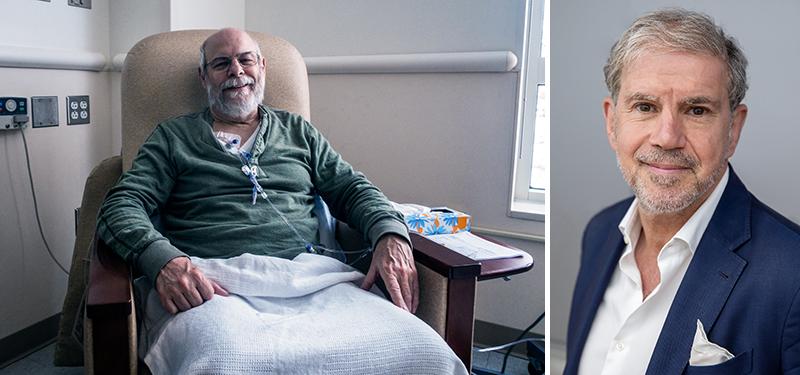Study: Outcomes with less invasive procedure for bladder cancer demonstrates new options for patients

Bladder removal, also known as radical cystectomy, is life-altering. For some patients with muscle-invasive bladder cancer, it’s often the only option offered.
Until recently, there was limited data on the success of a second option: trimodality therapy. This treatment involves endoscopically removing the tumour, and then treating the patient with systemic chemotherapy and radiotherapy.
A new study, co-led by Dr. Alexandre Zlotta, Director of Uro-Oncology at Mount Sinai Hospital, part of Sinai Health, and Staff in the Department of Surgical Oncology at University Health Network, where the multidisciplinary bladder cancer clinic is held, has now provided the most robust comparison between trimodality therapy and bladder removal for select patients with muscle invasive bladder cancer.
Trimodality therapy is often typically only offered to patients with significant comorbidities where removal of the bladder isn’t possible. For roughly 30 per cent of patients with one tumour, smaller than seven centimetres, the study shows that this therapy had equal results as bladder removal in five-year metastasis-free survival, cancer-specific survival, or disease-free survival.
This potentially game-changing research means that this therapy should be part of discussions a greater number of bladder cancer patients have with their treating physicians. “For those patients who have those specific characteristics that make them ideal candidates, it’s time to move on,” Dr. Zlotta notes. “We cannot only propose to remove the bladder if there is another effective treatment. Patients should be able to discuss and choose among various options if they are candidates for them.”
Published in June in the journal Lancet Oncology, and co-led by Dr. Jason Efstathiou, Radiation Oncologist from Harvard Medical School and Massachusetts General Hospital, the study, “Radical cystectomy versus trimodality therapy for muscle invasive bladder cancer: a multi-institutional propensity score matched and weighted analysis,” retrospectively looked at 722 patients treated at university centres in the United States (Mass General in Boston and USC, Los Angeles) and Toronto between 2005 and 2017.
The researchers decided to pursue this study, the largest ever analysis comparing these two treatment options for patients who would be eligible for either treatment, to fill a hole in the available data.
Dr. Zlotta explains what makes the research so strong. As a large multi-institutional study it demonstrated that the outcomes were the same for either option, regardless of which centre the patient received treatment. “It’s not that the bladder preservation was good because surgery was bad,” as outcomes after surgery were in keeping with the best available published results.
As for next steps, Dr. Zlotta says they would like to look at using biomarkers and genetics to predict a patient’s response to each type of treatment. They would also like to study what the results would be if they compared the two options for people who have more than one tumour in their bladder. “What is the sweet spot and whether if we push it, say to two or three tumours, how far can we go?” he says. “Still, if 30 per cent of all patients can be offered [this]. That’s huge.”












